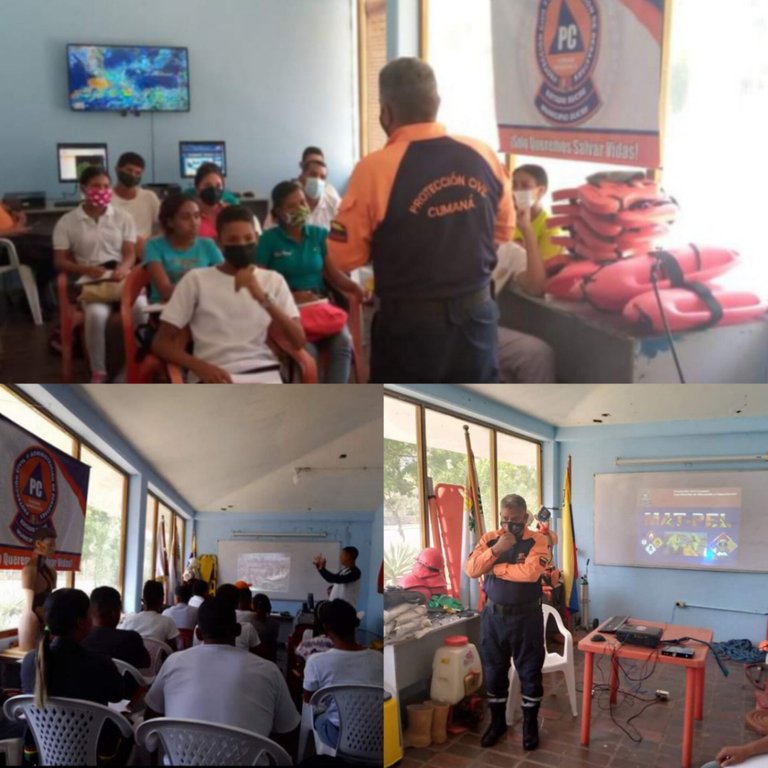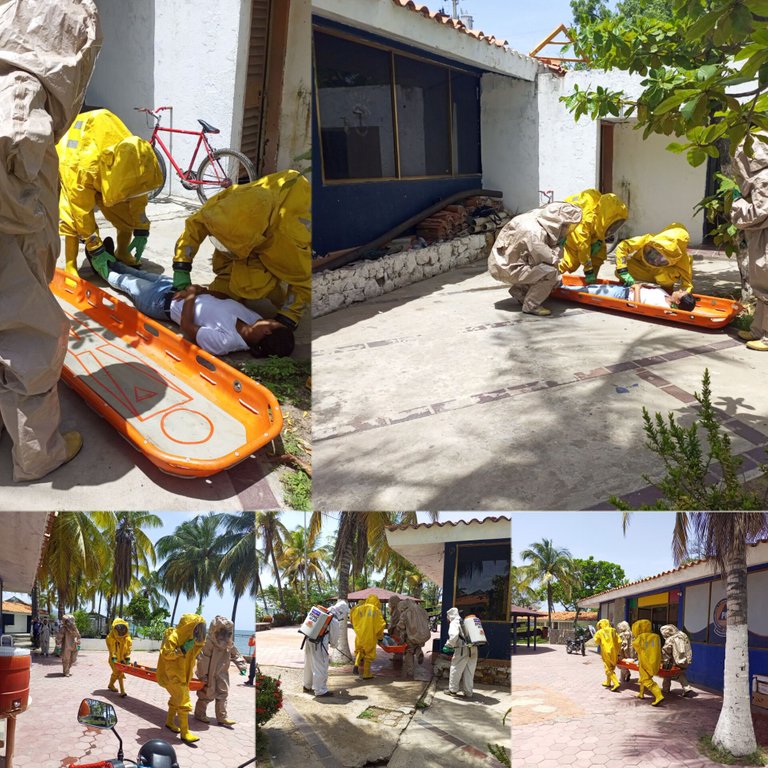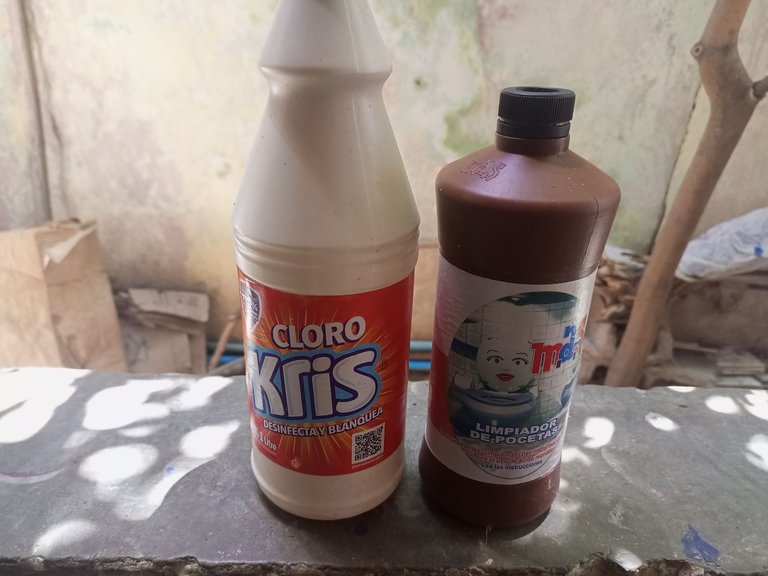Saludos hermanos de Hive, hoy les vengo hablar como fue mi experiencia en nuestro curso básico de manejo de emergencias ante situaciones con materiales peligrosos.
Aunque este tipo de emergencias no es muy común en nuestra ciudad de Cumaná Estado Sucre-Venezuela, nuestros funcionarios siempre tienen el riesgo de enfrentar eventos donde estén involucrados materiales peligrosos, situaciones estas que ponen en peligro la vida y salud de nuestros hombres y mujeres de naranja, como se les conoce a los miembros de la protección civil, de allí la importancia de conocer los protocolos internacionales de actuación ante este tipo de escenario.
Dado lo complejo y poco común de este tipo de accidentes, no se tiene preparación en esta materia por eso cuando surgió la idea de asistir a un taller para prepararnos en este ámbito enseguida dijimos sí.

El taller inicia con la parte teórica, donde se describen los objetivos del taller y la parte conceptual, importante de aprender para poder pasar a la práctica. Allí se les define materiales peligrosos, Sustancias peligrosas, desechos peligrosos, la clasificación de estos, estados de la materia, simbología (NFPA – ONU), cómo reconocer un material peligroso según las etiquetas,uso de la guía de respuesta ante emergencia GRE, seguridad de la escena y equipos de protección personal, manejo inicial y control de la escena, evacuación de lesionados y personas en peligro.
Es de hacer notar, que para poder iniciar este curso los estudiantes ya deben tener conocimientos en primeros auxilios, prevención y supresión de incendios, así como, sistemas de comando en incidentes.

Ahora en cuanto a la parte práctica del taller después de revisar toda la teoría se pasa a la parte práctica, en esta etapa se les enseña inicialmente los diferentes tipos de trajes de protección personal y su forma adecuada de colocación y retiro, se continúa con los manejos de los equipos de respuesta, uso y mantenimiento de estos, se continúa con el reconocimiento del escenario y la organización de la respuesta, organización de los de los equipos de trabajo y se cierra con un simulacro,

Previniendo accidentes con materiales peligrosos en nuestro hogar.
Aquí les dejo unos tips educativos (consejos) sobre cómo evitar incidentes con materiales peligrosos en nuestro hogar:

Nunca ligues cloro o lejía (hipoclorito de sodio) con Amoníaco, cuando ligas estas dos sustancias se producen vapores altamente venenosos y corrosivos como la cloramina más hidróxido de sodio, así como hidracina. Estas al ingresar al sistema respiratorio de personas o animales produce severos daños que pueden causar la muerte.
Otras dos sustancias que son peligrosas de ligar es el vinagre con el agua oxigenada, al unirse estas dos sustancias generan ácido proxiacético que es altamente corrosivo, también es importante no calentar agua que esté ligada con cloro, ya que al iniciar el proceso de hervir, ésta desprenderá vapor altamente corrosivo y tóxico para los seres humanos, animales y plantas que estén cerca
Bueno, gracias por haber leído hasta aquí,espero le sea de utilidad esta información, no me queda más que desearle un diluvio de bendiciones a todos y despedirme con nuestra lema.
¡Solo Queremos Salvar Vidas!
CRÉDITOS
Las fotos fueron tomadas con mi teléfono celular Infinix HOT 10S
 ENGLISH
Title: Attending the Hazardous Materials workshop
ENGLISH
Title: Attending the Hazardous Materials workshop
Greetings brothers from Hive, today I am here to talk about my experience in our basic emergency management course in situations with hazardous materials.
Although this type of emergency is not very common in our city of Cumaná, Sucre State-Venezuela, our officials are always at risk of facing events where hazardous materials are involved, situations that endanger the lives and health of our men and women from orange, as members of civil protection are known, hence the importance of knowing the international protocols for action in this type of scenario.
the complexity and infrequent nature of this type of accident, there is no training in this matter, so when the idea of attending a workshop to prepare ourselves in this area arose, we immediately said yes.

The workshop begins with the theoretical part, where the objectives of the workshop and the conceptual part are described, which is important to learn in order to be able to put it into practice. There they are defined hazardous materials, hazardous substances, hazardous waste, their classification, states of matter, symbols (NFPA - UN), how to recognize a hazardous material according to labels, use of the GRE emergency response guide, security of the scene and personal protective equipment, initial management and control of the scene, evacuation of injured and people in danger.
It should be noted that in order to start this course, students must already have knowledge of first aid, fire prevention and suppression, as well as incident command systems.

Now as for the practical part of the workshop, after reviewing all the theory, we move on to the practical part, at this stage they are initially taught the different types of personal protective suits and their proper way of donning and removing them, continuing with the management of the response teams, use and maintenance of these, it continues with the recognition of the scenario and the organization of the response, organization of the work teams and closes with a drill.

Preventing accidents with hazardous materials in our home
Aquí les dejo unos tips educativos (consejos) sobre cómo evitar incidentes con materiales peligrosos en nuestro hogar:

Never combine chlorine or bleach (sodium hypochlorite) with Ammonia, when you combine these two substances highly poisonous and corrosive vapors are produced such as chloramine plus sodium hydroxide, as well as hydrazine. These, when entering the respiratory system of people or animals, produce severe damage that can cause death.
Two other substances that are dangerous to bind are vinegar with hydrogen peroxide, when these two substances join together they generate proxiacetic acid, which is highly corrosive. It is also important not to heat water that is bound with chlorine, since when the boiling process begins, it will release highly corrosive and toxic vapor for humans, animals and plants that are nearby.
Well, thanks for having read this far, I hope this information is useful to you, I only have to wish everyone a deluge of blessings and say goodbye with our motto.
We just want to save lives!
CREDITS
The photos were taken with my cell phone. Infinix HOT 10S











~~~ embed:1675678384783761408?t=oZcg3wcoXP8zWNx5aej0UQ&s=19 twitter metadata:TWF5ZWxpbjIwMjF8fGh0dHBzOi8vdHdpdHRlci5jb20vTWF5ZWxpbjIwMjEvc3RhdHVzLzE2NzU2NzgzODQ3ODM3NjE0MDh8 ~~~
Congratulations @envillalba! You have completed the following achievement on the Hive blockchain And have been rewarded with New badge(s)
Your next payout target is 50 HP.
The unit is Hive Power equivalent because post and comment rewards can be split into HP and HBD
You can view your badges on your board and compare yourself to others in the Ranking
If you no longer want to receive notifications, reply to this comment with the word
STOPCheck out our last posts: